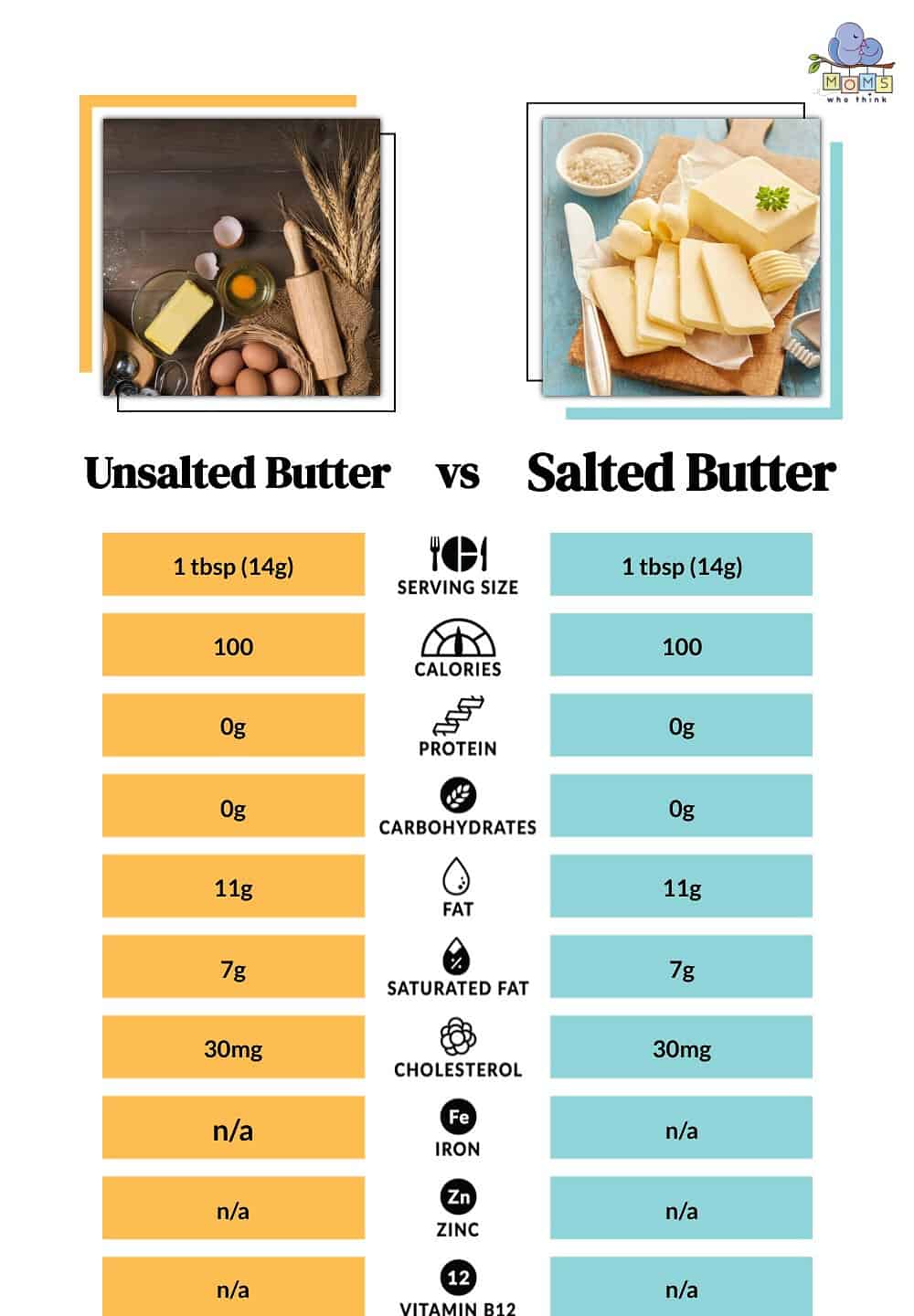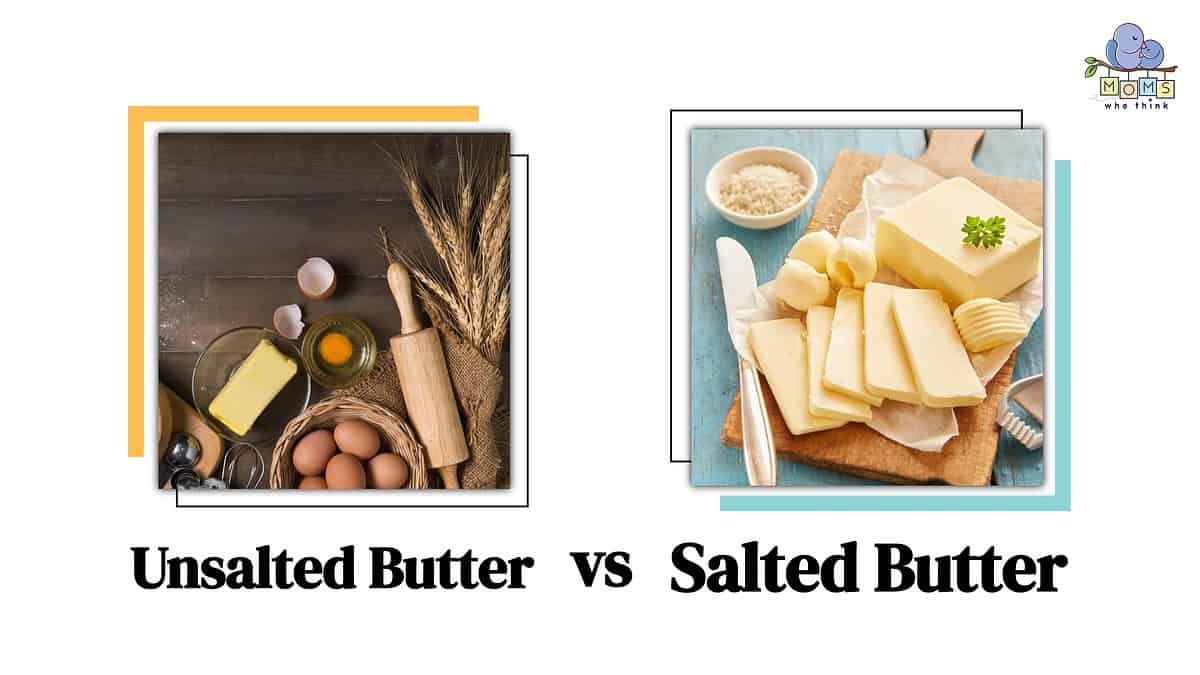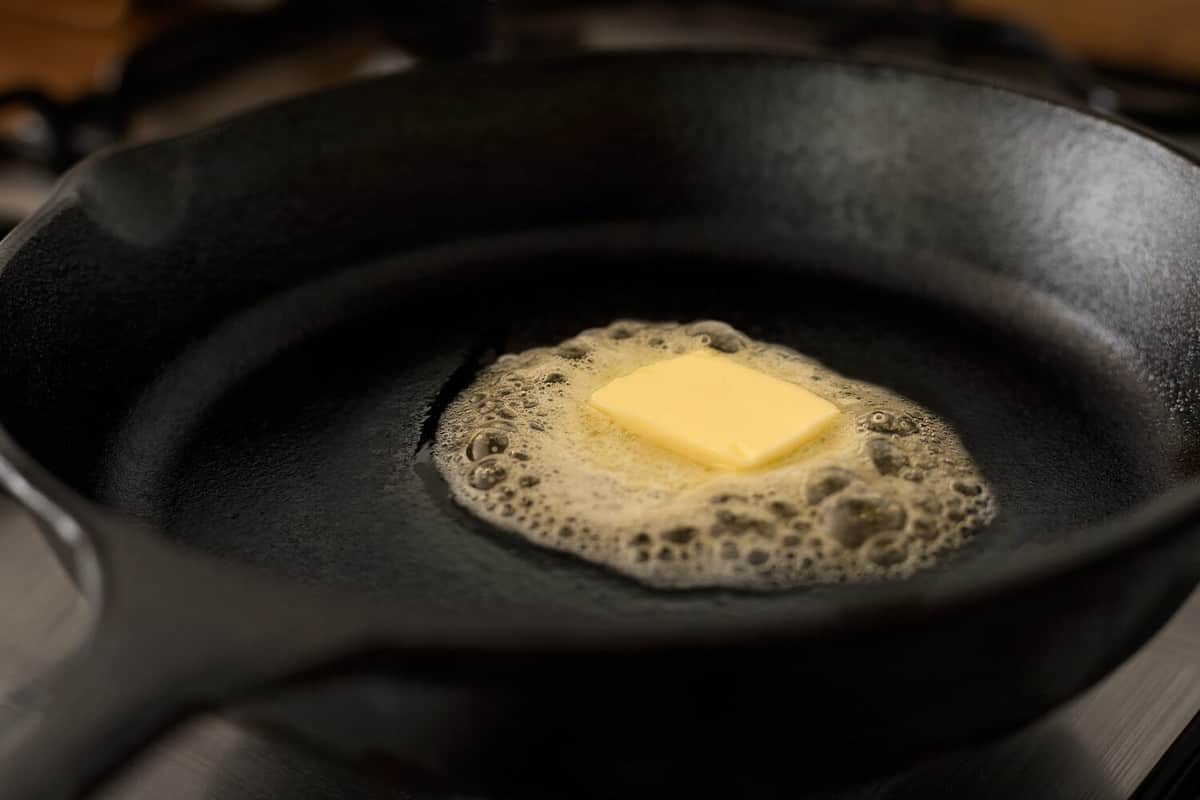Do you need help deciding whether to use salted or unsalted butter in your recipes? Most people have pondered over this question at some point. Salt plays a vital role in enhancing flavors. However, excessive salt amounts can easily overpower other tastes. Unsalted butter contains no added salt, while salted butter typically has around 1/4 teaspoon of salt per 1/2 cup. This article will provide you with answers that will help you to elevate your cooking skills! We will explore the basics and offer tips on using salted vs. unsalted butter.
Salted vs. Unsalted Butter: The Basics
Butter is an ingredient that seems unimportant, yet it adds to the taste of most cooked foods. This makes it a staple item in most kitchens. Salted and unsalted butter are very similar. However, they differ due to the amount of salt added during production. Both kinds of butter consist of pure butterfat, which helps give it a neutral flavor. Yet, salted butter also contains salt, which has flavoring benefits.
Butter is created by churning milk or cream after separating the milk from the cream. Next, they rinse away any buttermilk until only rich butter remains. The butter is then gently molded into the desired shapes before being packaged. Both kinds of butter have unique qualities and play different roles. As a result, it's essential to know which one to use when cooking or baking. Whether you choose salted or unsalted, the butter adds flavor enhancement to whatever dish you cook.
Salted vs. Unsalted Butter: Advantages of Salted Butter
When choosing between the two butters, the decision can be overwhelming. While unsalted butter may appear to be the best choice, don't overlook the benefits of salted butter. One of its advantages is the savory taste it adds to dishes. It's perfect for adding depth to your breakfast toast or adding flavor to other foods. Lastly, salted butter can be appreciated since it already contains the ideal amount of salt for most recipes. After all, the included salt eliminates the need for additional seasoning.

©
Salted vs. Unsalted Butter: Advantages of Unsalted Butter
When faced with choosing between these butters, a couple of factors must be considered. While salted butter can add to the taste of most dishes, many chefs and bakers prefer unsalted butter for its neutral flavor. It can adapt well to various cooking and baking recipes. The absence of salt allows the true essence of the butter to shine. This makes it an ideal ingredient for pastries and complex sauces. Furthermore, using unsalted butter gives you control over the amount of salt added to your recipes. This can be especially advantageous for those who strive to reduce their salt intake.
Salted vs. Unsalted Butter: When to Use Salted Butter
While butter is a typical ingredient for countless recipes, selecting the right type is crucial for spreads or toppings. Salted butter is preferred for spreading on bread, bagels, or toast, as it offers a taste that complements these foods. It is also used to top pasta and vegetables. Also, for those who like the sweet and salty taste, it is an excellent option for toppings on pastries. However, if a recipe specifically calls for unsalted butter, it is crucial to adhere to the instructions. The added salt in salted butter can disrupt the balance of ingredients and potentially ruin the outcome of the dish. So, next time you reach for salted butter, consider whether you intend to use it for spreading or topping purposes.

©Trzykropy/Shutterstock.com
Salted vs. Unsalted Butter: When to Use Unsalted Butter
Despite its name, unsalted butter significantly elevates the flavors of some of your favorite foods. It seems strange, but unsalted butter enriches the natural flavors of your ingredients. This flavor enhancement becomes especially vital when preparing most pastries and baked goods. Using unsalted butter will enable the creamy taste to surface without overpowering the dish with excessive saltiness. The next time you decide to bake something, consider using it to enhance the flavors of your food.
Salted vs. Unsalted Butter: Substituting Them
Choosing the right kind of butter is crucial even though they look identical. Despite their similar appearance, they play different roles when used in recipes. If a recipe asks for salted butter but you only have unsalted, don't worry! You can easily substitute salted butter by adding a pinch of salt. On the other hand, if you only have salted butter but need unsalted, reduce the added salt in the recipe. These minor substitutions shouldn't significantly impact the taste and texture of your goods as long as you adjust the salt. So, the next time you find yourself without the recommended butter, don't panic. Instead, experiment with different options to achieve the desired flavor and texture.

©
Salted vs. Unsalted Butter: Tips for Storing
Although butter is a kitchen staple, how people store it varies by household. So, how should you store and preserve it correctly? In the grocery store, butter is found in the refrigerated section. The packaging also states to keep it refrigerated. However, many prefer to leave their butter in a storage container on the kitchen counter. Although the packaging does not imply that this is safe, the USDA says, “butter and margarine are safe at room temperature. However, if butter is left out at room temperature for several days, the flavor can turn rancid so it's best to leave out whatever you can use within a day or two. Margarine, especially soft tub margarines, can separate into oil or water and solids when not kept refrigerated although it will be safe.“
If you still don't feel safe leaving it out on the counter, don't worry. You can store your butter in the refrigerator. Just take it out and place it on the countertop before cooking so it will be softened when you're ready to use it. According to the refrigeration storage suggestions, it can be out of the refrigerator for up to 4 hours. Afterward, return unused portions to the fridge. It can be stored in the original wrapper or a covered butter container until it expires.
When it comes to freezing butter, tightly wrap it in a freezer bag or keep it in the original packaging. It can be stored there for up to four months if frozen before expiration.
Salted vs. Unsalted Butter: Common Errors
Butter plays a role in recipes, whether sweet treats or savory meals. However, deciding between salted or unsalted butter can sometimes confuse the person cooking. A common mistake people make is adding too much salt when using salted butter. Another mistake is using unsalted instead of salted butter. It's crucial to understand that salted and unsalted butter have different effects on the flavors of certain foods. Consequently, choosing one can significantly impact the outcome of your recipe. By considering the subtle differences between these two types of butter, cooks can use it to enrich their foods.

©Moving Moment/Shutterstock.com
Ultimately, butter is an ingredient that can complement your meals and dishes. The one you should use depends on preference and the food being prepared. Unsalted butter is the best choice for recipes that rely on its texture and flavor. This includes pastries or luscious buttercream frosting. On the other hand, salted butter works best when used as a spread or topping. This enhances flavors in breads, pastas, and vegetables. Knowing when to use each type of butter can make a huge difference in the taste and texture of foods. As a result, it's essential to have both options available in your kitchen.
Up Next
- Unsalted vs Salted Butter in Baking: What To Know
- Clarified Butter vs. Ghee: Which is Healthier & Main Differences
- Shortening vs. Butter: The Good, Bad and Ugly
- Butter Chicken Recipe
- Gooey Butter Cake Recipe
The image featured at the top of this post is ©Pixel-Shot/Shutterstock.com.

